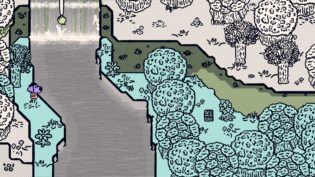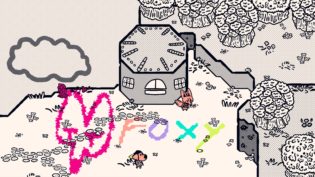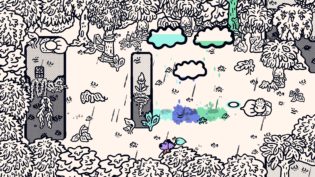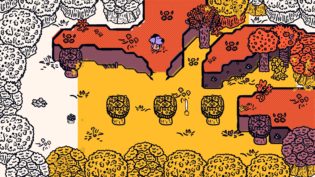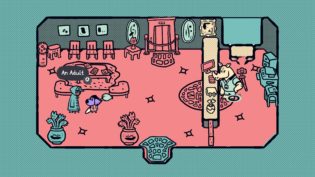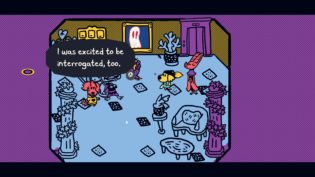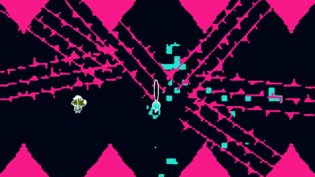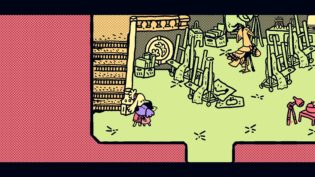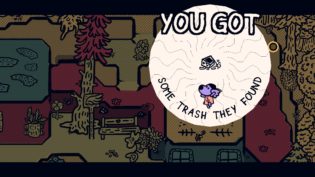A couple of years ago I saw the first teasers of the “Drawdog” game on twitter and it looked really neat. The project regularly popped up somewhere on my timeline, consistently looking more enticing until finally it changed the title to the current Chicory: A Colorful Tale and then finally, and very recently, got released. Despite me not liking the previous title from the developer, Wandersong, all that much it was a promising game with lots of heart, so I was hoping that Chicory will be better. It turned out to be more than that.
Mechanically, Chicory plays as a top down Legend of Zelda entry, with focus on exploration and puzzles and no combat outside of several boss battles. Though even there you don’t get a fail state, instead being able to continue immediately if you “fail”. However, the main way of interaction with the world is not a sword, a shield or a bow. It’s a magic brush that lets you paint the world as you see fit. Everything in this world can be painted by you. …well, technically there are limitations, but they’re minor or puzzle-related. Either way – the brush, that you can use at almost any point, is your main tool to solve puzzles, to fight bosses, to help people and to just have fun expressing yourself.
Which is central to the story of the game that shows us the world that suddenly became devoid of colour. And the wielders of the magic brush, who must paint the world with colour anew. This world is full of adorable characters, full of personality, many side stories and side quests, fun locations and lots of really heartwarming dialogue. And the journey the player takes is a journey of self discovery and hope. This game is so damn wholesome it’s impossible to not smile for the most of it.
Sure, this game has some weaker elements. For one, just like Wandersong before it, there are several sequences which last for longer than they should, crossing that line from “this is fun” to “can it stop now” and “am I doing things correctly, is something happening?” Which, unfortunately also just like Wandersong, extends to the final boss fight and some of the final moments. Hopefully, this is something the developer will figure out eventually. Among many many superbly written moments of characters “getting real” and talking about their views and issues, there were two that stood out as being shockingly poor done in contrast to everything else. And I’d say that one particular puzzle concept that came around the midpoint of the game was rather frustrating and finicky more than anything. But luckily it was not reused and with the amount of fresh ideas the game had, it never got stale.
Since it is a more exploration and experience kind of game, where gameplay is very simple (but shockingly engaging), it’s hard to find more words about the game. Despite being overwhelmed by joy of playing it and wanting to share it with the world. The soundtrack is good, the visual design and lots of fun little details are stellar. There are so many fun reactions and variations to how you play. And so many different ways you can experience this, otherwise mostly linear and narrative focused, game. Because it allows the players to put their personality in it on such a low level of colouring the world and the characters.
I loved this game. It feels like a lot of the ideas and concepts from Wandersong revisited, but improved by a lot. It is lovely, it is delightful, it is heartening. I simply cannot recommend Chicory: A Colorful Tale enough.


